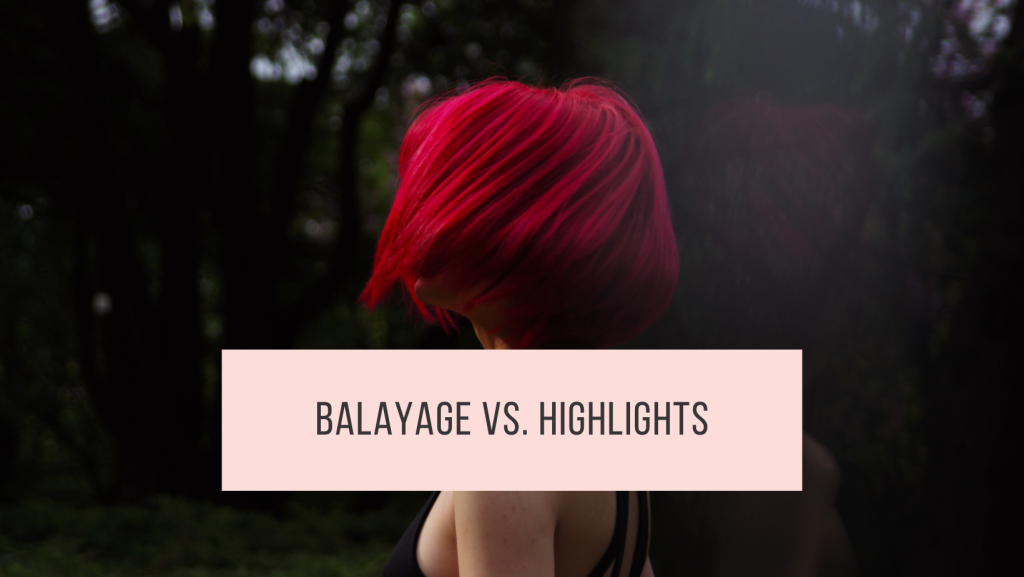Balayage vs. Highlights: Which Hair Color Technique Is Right

With so many coloring options available, it can be hard to choose the technique that best fits your look and lifestyle. Two of the most popular and versatile choices are balayage and traditional highlights. While both can enhance your hair with dimension, they offer unique effects and suit different styles. Here’s a breakdown to help you decide which technique is perfect for you.
Understanding Balayage and Highlights
Balayage (from the French word meaning “to sweep”) is a freehand painting technique where color is applied in a natural, sweeping motion. The result is a soft, sun-kissed look that blends seamlessly with your natural hair color. Balayage typically requires less frequent touch-ups, as it grows out naturally.
Highlights, on the other hand, involve using foils to separate strands of hair that are lightened from root to tip. This technique gives a structured, consistent look with defined color contrast. Highlights can be tailored to be bold or subtle, depending on the amount and placement of the lightened strands.
The Key Differences Between Balayage and Highlights
- Technique and Application
- Balayage: Color is applied to the surface of hair in a sweeping motion. There’s no use of foil, and the stylist has control over where the color is placed.
- Highlights: Hair strands are wrapped in foil after the color is applied. The heat from the foil allows the color to develop faster and often results in a more intense lift.
- Maintenance Requirements
- Balayage: This low-maintenance technique doesn’t require frequent touch-ups, as it grows out seamlessly with natural hair.
- Highlights: These generally require more upkeep, with touch-ups recommended every 6-8 weeks to keep the roots fresh and the color vibrant.
- Result and Finish
- Balayage: Provides a softer, more natural look with a gradient effect, ideal for those looking for a subtle glow.
- Highlights: Offer a more dramatic, defined look, adding high contrast and brightness throughout the hair.
- Customization Options
- Balayage: Perfect for those seeking a tailored, organic look with color that mimics how hair naturally lightens in the sun.
- Highlights: Great for those looking to add structure, with more control over color placement and intensity.
Pros and Cons of Balayage
Pros:
- Low maintenance, requiring fewer touch-ups.
- Ideal for adding dimension and depth without drastic contrast.
- Works well on a variety of hair lengths and textures.
- A natural, sun-kissed look that’s perfect for a soft glow.
Cons:
- May not be as bright or dramatic as traditional highlights.
- The technique can be time-consuming depending on the desired look.
Pros and Cons of Highlights
Pros:
- Allows for a high-contrast, bright look that’s great for dramatic change.
- Effective at covering gray hairs and adding vibrant color from root to tip.
- Works well for those who want a bold, consistent look.
Cons:
- Requires more frequent maintenance to prevent root regrowth.
- May be more noticeable as it grows out, potentially leading to a more defined line of demarcation.
Which Technique Suits Different Hair Types?
- Fine Hair: Highlights can add the illusion of volume, while balayage adds subtle dimension without weighing down the hair.
- Thick Hair: Balayage works well as it can soften the hair’s density and bring in depth without adding too much structure.
- Curly Hair: Balayage’s freehand technique often works better with curls, as the color flows naturally with the hair’s texture.
- Straight Hair: Highlights add visible brightness, while balayage offers a low-maintenance alternative with a softer finish.
Choosing Based on Your Desired Look
- Soft and Natural: Balayage is perfect if you’re aiming for a beachy, natural look with subtle transitions.
- Bold and Structured: If you prefer a more defined, noticeable color contrast, highlights will achieve that effect.
- Longer Lasting: For those who don’t want to spend too much time in the salon, balayage’s low-maintenance qualities are ideal.
- Dramatic Change: Highlights are great for a significant transformation with vibrant color and structured placement.
Maintaining Balayage and Highlights
No matter which technique you choose, proper aftercare is key to keeping your color vibrant and healthy. Here are some tips:
- Use Color-Safe Shampoo and Conditioner: Protect your investment with products specifically formulated for color-treated hair.
- Deep Condition Weekly: Color treatments can dry out hair, so give it the extra moisture it needs.
- Avoid Excessive Heat Styling: Try to limit the use of hot tools, as they can fade color and cause damage.
- Opt for UV Protection: Use hair products with UV filters or wear a hat to prevent sun-induced fading.
- Schedule Regular Toners: Both techniques may benefit from a toner between touch-ups to maintain the desired shade.
Conclusion: Which is Right for You?
Deciding between balayage and highlights ultimately depends on your style, maintenance preferences, and desired look. Balayage is ideal for a soft, natural effect with low upkeep, while highlights offer a bold, defined color for those who don’t mind regular maintenance. Whether you’re after a relaxed, sun-kissed look or a structured, vibrant effect, both techniques are versatile and customizable to your needs. Consult with your stylist to discuss which option aligns with your hair goals and get ready to rock your best look for the season!